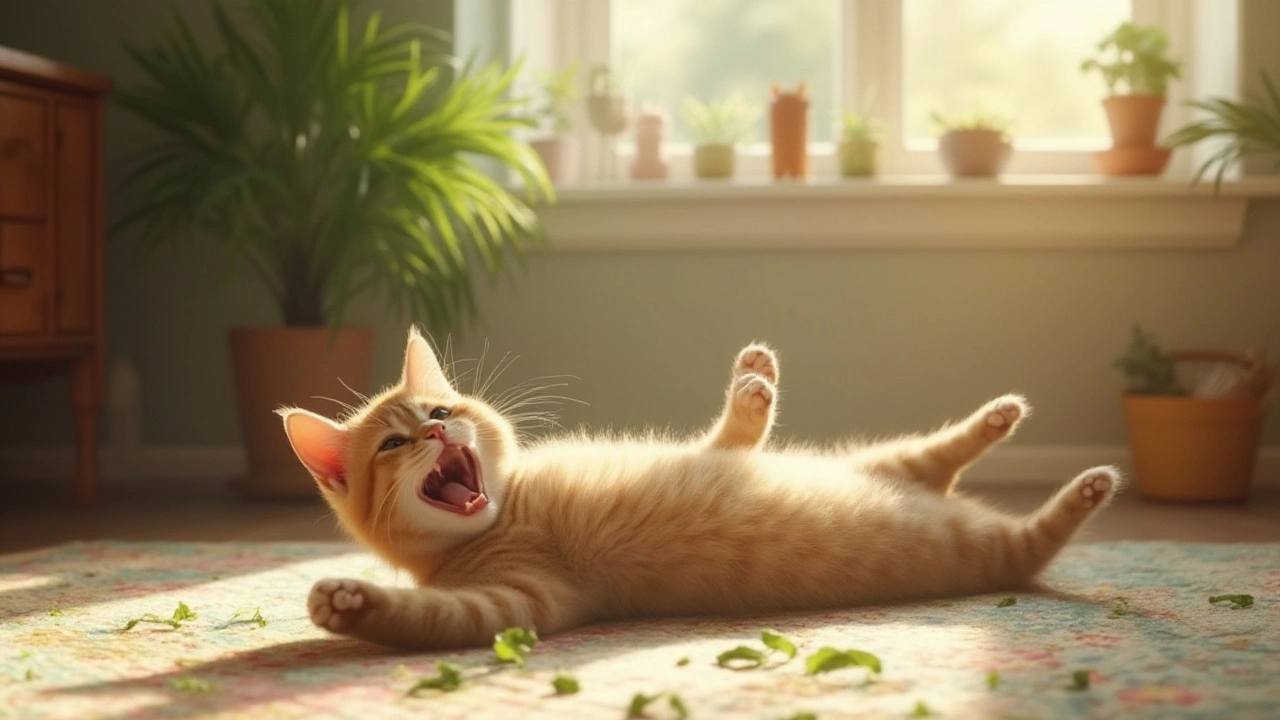Catnip: What It Is and Why It Matters
Ever wondered why your cat goes wild over a few leaves? That’s catnip, a plant from the mint family that contains a compound called nepetalactone. When cats sniff it, nepetalactone binds to receptors in their nose and triggers a short burst of excitement. But catnip isn’t just a feline toy – humans have used it for centuries as a mild relaxant, a digestive aid, and even a sleep helper.
In this guide we’ll break down the real benefits, safe ways to enjoy catnip, and what to watch out for. No jargon, just clear facts you can apply today.
Health Benefits for People
Catnip tea is the most common way for humans to tap into the herb’s effects. A warm cup can calm nerves, ease mild headaches, and help settle an upset stomach. The plant contains flavonoids and volatile oils that have mild anti‑inflammatory properties, so a sip after a long day might reduce a low‑grade joint ache.
People also use catnip as a natural sleep aid. A half‑teaspoon of dried leaves steeped for 10 minutes, taken about an hour before bedtime, can promote a gentle drowsiness without the grogginess you get from stronger sedatives. It’s not a knockout drug, but many users report smoother transitions into sleep.
If you’re into DIY remedies, catnip can be added to homemade insect repellents. Its strong scent keeps mosquitoes and flies at bay, making it a handy addition to a garden spray or a candle blend.
While catnip is safe for most adults, pregnant or nursing women should skip it, and people with known allergies to mint family plants should test a tiny amount first.
How Cats React to Catnip
About 60‑70 % of cats respond to catnip, and the reaction is hereditary. When a cat sniffs the leaves, they may roll, purr, or even become a bit hyper. The high lasts roughly five to fifteen minutes before the cat becomes temporarily immune – another sniff won’t do much until the effect wears off.
For indoor cats, a small catnip toy can provide mental stimulation and encourage exercise. Just give them a short play session and then store the toy away for a day or two; this keeps the novelty alive.
If you prefer a less intense version, you can grow catnip in a pot and sprinkle a few fresh leaves on your cat’s scratching post. The scent is milder than the dried version, and it doubles as a fresh herb for your kitchen.
Watch out for overly enthusiastic cats that might chew and ingest too much. Large amounts can cause mild stomach upset, but it’s rarely serious. A few leaves are plenty for a playful session.
Overall, catnip is a low‑risk, high‑reward plant. Whether you’re sipping tea, making a home remedy, or just watching your cat have a mini party, you’re tapping into a natural product that’s been around for ages. Use it responsibly, keep an eye on reactions, and enjoy the simple lift it gives – for you and your furry friend.
How Catnip Affects Cats: Science, Uses, and Fun Facts
Curious why cats go crazy for catnip? Discover the science, health tips, and fun facts about this famous feline supplement and how to use it responsibly.
